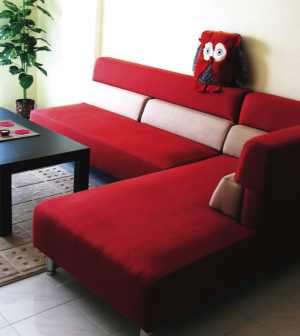- Belgium comes to Yamashita Park
- Residential Villa in Phuket Entices Remote Workers With Long-Stay Rates
- Rare pieces of French glass art at the Mirai Museum of Art
- Feast on fresh fish and seafood at the 2024 ‘Sakana’ Festival
- Would you like to ride in a Louis Vuitton gondola lift?
- Naked Snow Aquarium
- Festive lights at Yomiuriland will get you feeling the holiday vibes
Getting Out of Line

While there are obvious advantages to living in manmade structures (protection from the rain, snow, and extreme temperatures comes to mind), the buildings that house us have many features not found in the natural world. Because our consciousness and bodies come from nature, residing in artificial surroundings can cause certain stresses to our nervous system, often in ways that we don’t recognize. Among the most basic but profound are straight lines, which set up two dynamics that we don’t find in the great outdoors: corners and edges.
You don’t see straight lines in nature. If you’re looking at a straight line, it means that a human being has been there. (Take a look at a map.) The things we see as ‘straight’ in nature – tree trunks or limbs of the body, for example – are actually not straight, but have a subtle irregularity to their shape. While there is a benefit to having a flat surface to a table or floor – it’s nice not tripping while walking on a flat surface or having your pen roll off the table – the edges and corners that get created set up challenging scenarios.
These long, straight, hard lines remind our nervous system of other things that are straight and manmade: the blades of knives and swords. The common denominator is that they produce sharp, cutting energy. Because our bodies – products of the natural world – find the straight lines so alien, they ‘read’ these edges and corners as hostile and threatening. Is it any wonder that when living our lives in modern society we feel ‘on edge’ or ‘stuck in a corner’, whereas we feel less so when vacationing in more natural environments?
When childproofing a home, one of the first things expectant parents do is to soften corners and edges of furniture. Why not do the same for the adults? Of course, you don’t want bumper-car padding on all of your furniture – design magazines certainly wouldn’t buy into that either – but tablecloths can soften the edge of tables, for example, and buying furniture with more rounded edges and corners can go a long way to creating a softer, more welcoming environment. When the sharper edges are less visible, your nervous system isn’t busy monitoring the environment for potential threats and can relax into its present-time experience.
Corners of rooms also create a challenge. Isn’t it interesting that a traditional punishment for children is to have them stand facing into a corner, where three straight lines intersect? How interesting that this is where dustbunnies (and therefore stagnant energy) accumulates. Corners – as well as the edge where the floor and wall meet – limit energy circulation, which is one of the reasons dust accumulates there: it’s a sign that things are stagnant in that area. It is therefore important to do what you can to enliven the area by inviting energy to circulate.
You can add vibrancy to a corner in a number of ways. Plants and flowers bring fresh air through oxygen production (and perhaps an aroma), while the more natural shape of their leaves help to visually break up the line connecting the walls. A circulating fan helps to move energy around, while an aromatherapy diffuser releases fresh aromatic air in more randomly-shaped clouds of mist. Speakers enliven these dead spaces with sounds that we can enjoy, while lamps or other sources of light can bring illumination to an otherwise dark space. Anything that’s rounder in shape will help to balance out the straight lines and literally create circulation.
We are living at a time where we have many choices when decorating our homes. Never before has such an array of design options been available. Consider bringing more furniture with softer edges and rounded corners into your home, along with seating and other furniture whose shapes are more curved. This helps to balance out the straight lines that will inherently be found in any modern domicile in the forms of floors, windows, and ceilings, unless you live in a yurt (Google it). Notice how the Yin-Yang symbol, which speaks to the balance of extremes, has no straight lines, and that the edge bridging polar opposites is a wavy line. Creating an overall balance between these forms in your home helps to create a warm, naturally welcoming space.
May your home greet you with a welcoming embrace.
Mark Ainley is a Contemporary Feng Shui Consultant and Emotional Stress Consultant living in Vancouver. A former 5-year resident of Tokyo, Mark consults with clients internationally to help them design living and work spaces in alignment with their goals. He also provides consulting in emotional stress management, as well as in the connection between facial structure and innate behavioural and communication patterns. He can be reached through his website: www.markainley.com, and his latest blog: www.fengshuiwithease.com.














